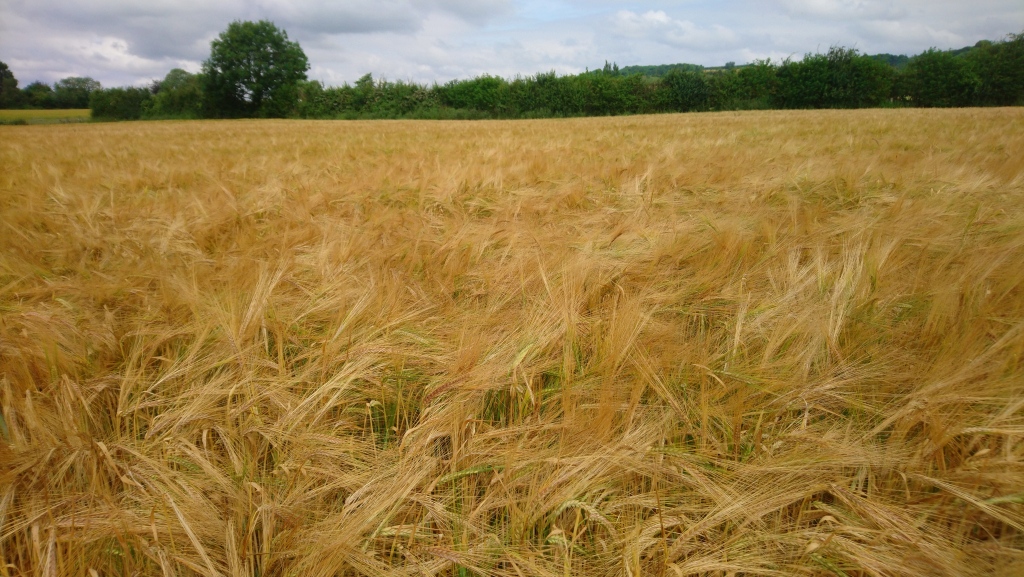
[177] Hordeum vulgare, Barley
Introduction
Hordeum vulgare, Barley, is a very widely cultivated species of cereal crop that has been domesticated for about ten thousand years.
There are about fifty species of Hordeum, some of which are called barleys.
Taxonomy
Kingdom – Plants
Division – Vascular Plants
Class – Angiosperms (Flowering Plants)
Clade – Monocots
Clade – Commelinids
Order – Poales
Family – Poaceae
Subfamily – Pooideae
Supertribe – Triticodae
Tribe – Triticeae (Wheat, Barley, Rye and other crops)
Genus – Hordeum
Scientific Name – Hordeum vulgare
It has at least fifty named cultivars.
Name
The Old English word for Barley was bere, which is cognate with the Latin farina meaning flour. Hence it became bærlic (‘of barley’) and barley. The word barn is cognate, originally meaning barley-house.
Hordeum comes from an old word meaning bristly.
Description
Cereal grain crops – such as barley, oats, rye and [345] wheat, are extensively cultivated in large fields – and in the UK they are known generically as corn. (The word corn in US usage generally means what we call [364] maize.)
Fields of corn look much the same at a distance – tall, strong grasses that turn brown as the seeds ripen before harvesting.
Closer in, when you can see the individual ears, differences emerge. I can’t find the botanical name for them but each spikelet of Rye on the cereal ear has a very long bristle. The ears are generally approximately horizontal.

Here are some more pictures of the crop.




Habitat and use
Barley has been cultivated for about ten thousand years, probably starting in the Fertile Crescent (modern Iraq, Syria, Israel, Jordan and Egypt) with the beginnings of settled farming. It has been used as fodder for animals and to make malt for beer.
For human consumption it can be put in soups and stews and some types of barley bread.
Worldwide it comes fourth in the lists of grains produced by volume – after [364] Maize, Rice and [345] Wheat.
Hordeum vulgare is presumed to have come from Hordeum spontaneum, Wild Barley, which is native to the Middle East and adjacent areas.
Historically in England barley has been used as a measure, with three barleycorns to an inch.
Other Notes
Nothing to do with this species but while rye, wheat, corn and barley are generally singular uncountable nouns, the word oats is always treated as plural.
See also
Hordeum murinum, Wall Barley or False Barley, is widespread and common as a wildflower (or weed) through most of England and Wales, mainly in coastal areas. It is like a shorter version of Hordeum vulgare.




Pingback: [288] Pyrochroa serraticornis, Cardinal Beetle and other Beetles | The Species of Britain
Pingback: [345] Triticum aestivum, Wheat | The Species of Britain